

Heirloom Stories
Guides and insights for old house enthusiasts, aspiring antique dealers, and collectors
- Editorial Guidelines
- Privacy Policy
- Terms & Conditions
- Digital Issue
© 2022 HEIRLOOMS AT HOME & AGELESS HEIRLOOMS. ALL RIGHT RESERVED.
The Meaning of Family Heirlooms: Connecting Past and Present
Here's how i discovered the rich history and meaning behind my family's heirlooms..
- Lauren Thomann
- January 12, 2023

As a child, I remember being fascinated by the old photo albums my grandparents would pull out of the basement. To me, these pictures were like little windows into the past. They gave me a glimpse into my ancestors’ lives and the stories that made up our family history.
But as I’ve grown older, I’ve realized that family heirlooms are about so much more than just sentimental value. In this article, we will explore the special significance and meaning of family heirlooms. We will also discuss the valuable lessons that can be learned from these cherished items. When linked to a story, these antiques can hold a special place in our family’s history. Here’s what heirlooms are capable of doing:
Preserving Our Memories
One of the most valuable things about family heirlooms is the way they preserve our memories of our ancestors. These items can be physical reminders of important events and people in our family’s history. And this helps us to connect with our past in a tangible way.
For example, my grandmother’s wedding set has been passed down through the generations. Every time I see the rings, I think of the love and devotion that she shared with her family and my grandfather. It also helps me visualize my grandmother’s face, voice, mannerisms, and the way she would clutch at her rings. These rings keep her memory alive.
Bringing Us Together
Another important aspect of family heirlooms is the way they can bring us together. These items can serve as conversation starters and help to spark meaningful conversations between family members. They can also help to foster a sense of unity and belonging within a family, as we come together to reminisce and share our memories.
For example, my aunts and mom acquired a collection of old family photos that we loved to look through as a family. It was a special bonding experience for us. Unsurprisingly, the experience helped me to learn more about my family’s history and the people who came before me on my mother’s side.
Providing a Sense of Continuity
Perhaps one of the most significant thing about family heirlooms is how they provide us with a sense of continuity. These items remind us that we are a part of something bigger than ourselves. We are all connected to a rich and diverse family history. These items ( when not hoarded in excess ) help us to feel grounded and rooted in our family’s past. When linked to a story, these antiques give us a sense of belonging and identity.
Adding Meaning to Our Lives
Family heirlooms often hold a deeper meaning and offer valuable lessons to those who inherit them. These items can serve as a reminder of the values and traditions that have been passed down through the generations. These “reminders” can inspire us to carry on these important legacies in our own lives.
For example, my great-great-grandmother’s gold signet ring was hidden in her bun when she came to America after WWI. It is one of the only remaining items we have from her. My grandmother started the tradition of passing down the ring to the eldest single woman in the family.
She wanted this beloved possession to embody the strength, resilience, and independence of my great-great-grandmother, Anna Barbara. It took incredible fortitude for my ancestor to travel without her husband and with young children to create a better life. Every time I look at it, I am reminded of the hard work and dedication that she showed throughout her life. It inspires me to be just as diligent and persevering in my own pursuits.
So, the next time you come across an old family heirloom, take a moment to appreciate the meaning and lessons that it holds. Let it inspire you to be the best version of yourself.
Ancient Jewelry Discovered by Archeologists in England
An incredible and heartfelt antique rug adventure in new orleans, medieval ring discovered by metal detector sold for thousands, this couple fell in love with a classic french armoire, a converted sled finds new life as a plant stand, an antique bed helps a collector fall in love with antiquing, historic tapestries on display after a 24-year restoration journey, our favorite family heirloom ideas.

- Terms & Conditions
© 2022 HEIRLOOMS AT HOME & AGELESS HEIRLOOMS . ALL RIGHT RESERVED.
This website uses cookies to improve your experience. By clicking “Accept“, you agree to our website's cookie use as described in our Cookie Policy. Accept Read More

Essay: How Revisiting Family Heirlooms Brings About New Meaning
The Oma pan is a tiny aluminum saucepan. It’s probably something you could buy at a thrift store for a dollar. But it’s mine, and it used to be my grandmother’s, and I think of her every time I use it to scramble a few eggs or melt butter for baking.
When we think of heirlooms, we tend to think of things with monetary value — jewelry, china, silver, maybe art or furniture. But when we think of inexpensive, decades-old household items, we tend to think of them as clutter.
I must admit, I’m kind of obsessed with decluttering. I tend to get easily overwhelmed by mess when I have too much stuff, so decluttering gives me a sense of clarity and order. Fewer things mean fewer things to clean and put away. And at this stage of my life, with five busy people in my household, managing all our stuff is especially important.
Back when my 94-year-old Oma died, I’d just gotten married, and I was finishing up law school several states away. When it was time to divide up Oma’s belongings, my four siblings and I were tasked with choosing items in turn until no one wanted anything anymore. Since I was away, my mom stepped in to pick for me, guessing as best she could what I might like or need for myself or my apartment.
When I next arrived at my parents’ house, I had a mishmash of stuff waiting for me. A pretty tablecloth cross-stitched by my grandmother. A dented kitchen funnel. A great-aunt’s partial silver set. A few pieces of midcentury glassware. A Gilhoolie tool (Google it — they’re amazing). My grandmother’s favorite earrings. A great-uncle’s watercolor painting. A decorative silver (pewter?) plate from Germany. A large circular mirror in a not-my-taste gold frame. Maybe there were other things, things I immediately rejected as clutter. But I only remember these things, the things I did take. You’d think that would make them important. And yet they sat, mostly unused for one reason or another.
I’m afraid to wear the earrings. They seem a bit delicate, and they should probably have a checkup with a jeweler. The great-aunt’s silver rarely comes out, and neither does the hand-stitched tablecloth, as it doesn’t really fit properly on any of my tables.
The gold mirror followed me through three moves, shuffling between attics and storage rooms, before it finally found a home above my youngest child’s dresser. I repainted the frame in a soft lilac that matches my daughter’s bedroom decor. She and Oma never met one another, but they share a birthday separated by 105 years, a connection that my daughter savors. When the mirror once again hung on a wall, it was transformed from dusty attic life to thoughtful everyday use, and in that move, it finally transcended its intermediate years as clutter. And therein was the magic: It had become useful again. Now it has a new life, a new story interweaving with the old.
The designer William Morris famously said, “Have nothing in your houses that you do not know to be useful or believe to be beautiful.” It’s as good a test for screening out clutter as any. All sentimental items are beautiful, I would argue, if they give us fond memories of loved ones. But what good are they if we never take them out, see them, use them? We’re neither using them nor enjoying their beauty.
That’s why I have a special fondness for everyday heirlooms. Because they’re not precious, we can feel free to use them all the time. Through these prosaic items, we spend our ordinary days in communion with the ordinary days that came before: ordinary childhood days when I’d wake up on the nubby living room couch after a sleepover at Oma and Opa’s apartment. The smell of French toast made from Oma’s homemade raisin bread coming from the kitchen, cooked on the gas stove that she lit with the boxed matches that always sat on the counter. There was a lot of cooking at her place, and while I don’t remember the Oma pan specifically — I tended to let her wait on me — using her cookware feels like a tangible connection to who she was, what she did for us, how we spent our time. Decades apart, our hands on the same tools, doing daily work — that’s both useful and beautiful, Mr. Morris.
I’ve always been fascinated with the everyday — the way people lived at home in other eras, seeing the home of a friend who’s moved (so I can picture them there when we talk), and even what my friends put in their grocery carts. I want to see people where they are when they are most themselves, and the material things of everyday life are a part of that.
It’s time I decluttered some neglected heirlooms — not by getting rid of them. No, I’m going to make them useful, which will save them from a life (a death?) in dusty storage. The earrings are going to the jeweler so I can wear them for the first time ever. My other grandma’s china will be coming out more often. The pretty glassware will go into more regular rotation.
Sure, there are risks. I may break these heirlooms or wear them out or even lose them. But, this much is certain — I won’t turn them into clutter.
8:00 AM EST
August 10, 2021
Related Articles

2024 City and Regional Magazine Association Names "The Nightmare in East Palestine" a Finalist
The story, written by senior editor Annie Nickoloff, is up against four other features from publications across the country in the Feature Writing category. By Dillon Stewart

Why Restaurants and Newsrooms Feel the Same Joys and Pains: Editor's Note
The highs of creativity and lows of commerce make the local media business and the restaurant business similar endeavors. By Dillon Stewart
Editor's Note: Four Minutes of Togetherness During the Total Solar Eclipse
In this fragmented time, we need something to believe in, something to bring us together. By Dillon Stewart
- How to Use FamilySearch
- What's New at FamilySearch
- Temple and Family History
- Easy Activities
- Why Family History Matters
- Genealogy Records
- Research Tips
- Websites, Apps, and Tools
- RootsTech Blog
- Preserve Photos and Documents
- Record Your Story
9 Inspiring Stories about Family Heirlooms
By Cheri Peacock
What stories do your family heirlooms tell? Here are 9 that will make you grab a tissue—and your family tree.
Something Borrowed
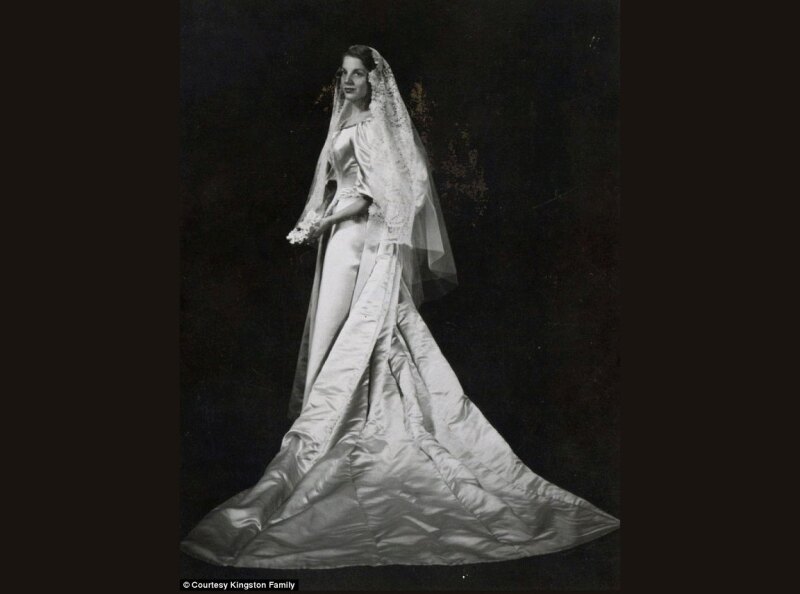
Can you imagine wearing a 120-year-old wedding dress? For a young Pennsylvania bride, her “something borrowed” is a wedding dress previously worn by 10 other brides in her family.
Handwritten Recipe Book

A 200-year-old heirloom recipe book , acquired at an English market in the 1990s, finds its way to the author’s great-great-great-grandson. The housekeeping book, with recipes, tips, stocks, and nutrition in it, was handed down from mother to daughter over generations.
Refugee Heirlooms
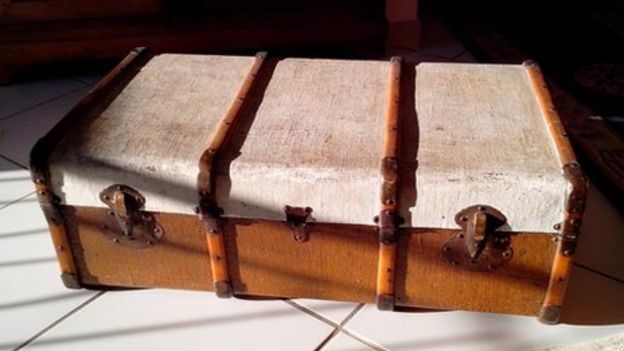
If you were forced to leave your home, what would you take with you? From class photographs to books and jewelry, read various accounts of family heirlooms , saved by refugees throughout the last century.
Stories Behind the Heirlooms

From a pearl necklace and letter written in the time of Marie Antoinette to a beautiful hand drawn book from WWI era and audio disks from WW2, learn the stories behind these family heirlooms.
Memorabilia-filled lap desk
A lock of hair, $48 mortgage payment receipts, family photographs. Descendants are reunited with a 19th century antique lap desk filled with memorabilia.
Heirloom exchanges?
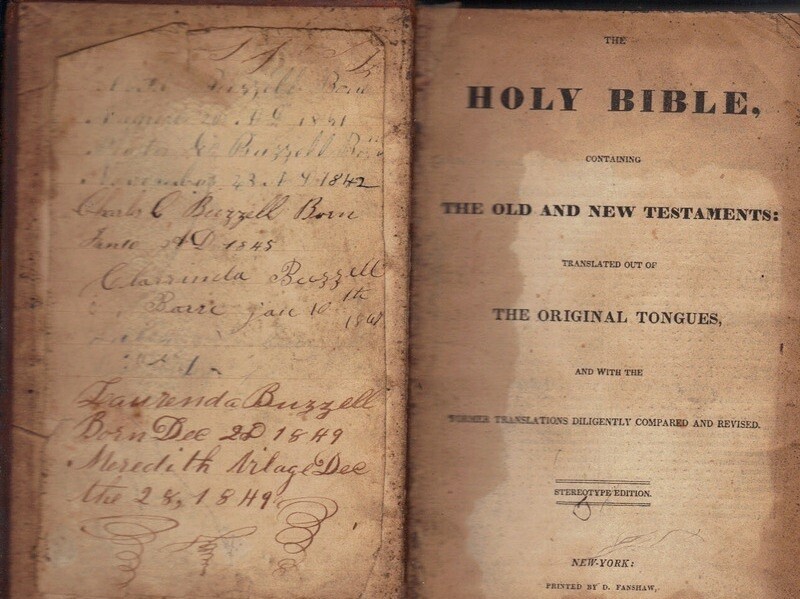
You’ve heard of online dating services, but what about online heirloom matching services? JustAJoy website is a family heirloom exchange for sellers and buyers. From old Army pictures to long-lost family Bibles, owner Joy Shivar connects the dots between the items and family members.
A stitch in time

A 19th-century quilt traces family history back to Lake Lucerne, Switzerland.
How a lice comb becomes the most valuable heirloom

A lice comb—hidden from guards in a Nazi slave labor camp—is a family’s most valuable heirloom because of the story and character it tells of their ancestor.
Thrifted Purple Heart
A Purple Heart medal found at a thrift store in Arizona was reunited with its World War 2 veteran’s family.
No matter what family heirlooms you have, each one tells a unique story—of the person or place of its origin. These heirlooms, even after centuries, still bring families together as they tell of the past. What neat heirlooms does your family have?
You may also like:

Preserve and Protect Family Heirlooms & Treasures
Matan Efrati / EyeEm / Getty Images
- Genealogy Fun
- Vital Records Around the World
- American History
- African American History
- African History
- Ancient History and Culture
- Asian History
- European History
- Latin American History
- Medieval & Renaissance History
- Military History
- The 20th Century
- Women's History
- Certificate in Genealogical Research, Boston University
- B.A., Carnegie Mellon University
Family treasures link generations in a deep, personal way. Anyone who has seen their great-grandmother's baptismal gown, grandfather's wallet, or a photo of a relative going off to war knows how moving these pieces of history can be. These treasured items passed down from generation to generation provide insight into the lives of our ancestors and a richer understanding of our family's history .
Sometimes these treasured family items make the journey from one generation to the next, but the stories that help give meaning to these treasures may not survive the trip. Ask family members to share with you their memories of each treasured family heirloom, such as the name of the original owner, how it was used in the family, or remembered stories connected to each item. Check with your local library or historical society, or browse the internet, for information on historic decor, furnishings, clothing, and other artifacts to help you learn more about the history of your family heirlooms and how to protect them.
Family heirlooms are a great treasure but can be easily damaged by light, heat, humidity, pests, and handling. Here are a few basic things you can do to preserve these heirlooms for future generations.
Display or Store Your Treasures in a Stable, Clean Environment
Filtered air, a temperature of 72° F or below, and humidity between 45 and 55 percent are ideal goals. If you feel that you must display fragile items, then try to avoid dampness, too much heat, and dramatic changes in temperature and humidity. If you feel comfortable, your treasures probably will too.
Display and store your family heirlooms away from heat sources, outside walls, basements, and attics.
Write It Down
All objects deteriorate over time, so start caring for them now. Make sure to identify, photograph, and maintain records of your treasures. Describe the history and condition of each object; note who made, purchased, or used it; and relate what it means to your family.
Shun the Light
Sunlight and fluorescent light fade and discolor most treasures, and are especially dangerous to fabrics, paper, and photographs. On the other hand, heirlooms stored away in a box bring much less enjoyment! If you choose to frame or display family treasures, place them on or near walls that get the least amount of sun. Framed photographs or textiles may also benefit from having an ultraviolet light-filtering glass. Rotate items between display and storage to provide a "rest" from exposure and prolong their life.
Watch out for Pests
Holes in furniture or textiles, wood shavings, and tiny droppings are all evidence of bug or rodent visitation. Consult a conservator if you spot trouble.
Heirloom Allergies
Historic objects can be harmed by a variety of items including abrasive cleaners; dry-cleaner's bags; glues, adhesive tapes, and labels; pins, staples, and paper clips; acidic wood, cardboard, or paper; and pens and markers.
Even If It Is Broken, Think Twice Before You Fix It
A smudged painting, torn photograph, or broken vase may seem easy to fix. They aren't. Well-intended amateur repairs often do more harm than good. Consult a conservator for advice on valued items.
If an item is especially precious, sometimes there is no substitute for expert help. Professional conservators understand what causes the deterioration of many different materials, and how to slow or prevent it. They master their subject through years of apprenticeship, university programs, or both, and usually have a specialty, such as paintings, jewelry, or books. A local museum, library, or historical society may know where to find conservators in your area and can offer other advice on preserving your treasured family heirlooms.
- Preserving the Past: How to Care for and Protect Old Photographs
- Scrapbooking Your Family History
- How To Preserve Homemade Crystals
- Celebrate Family History Month and Explore Your Lineage
- 5 Steps for Identifying People in Old Family Photographs
- About Architectural Antiquities and Salvage
- Fun Family History Activities for Family Reunions
- Treasure of the Ancient Aztecs
- Creating and Editing Digital Photos
- How to Research UK Coal Mining Ancestors
- 14 Classic College Graduation Gifts
- Create Your Own Heirloom Ornament
- The Importance of Historic Preservation
- Understanding Pirate Treasure
- How to Begin Tracing Your Family Tree
- What is a Baluster? What Is a Balustrade?
- Craft and Criticism
- Fiction and Poetry
- News and Culture
- Lit Hub Radio
- Reading Lists

- Literary Criticism
- Craft and Advice
- In Conversation
- On Translation
- Short Story
- From the Novel
- Bookstores and Libraries
- Film and TV
- Art and Photography
- Freeman’s
- The Virtual Book Channel
- Behind the Mic
- Beyond the Page
- The Cosmic Library
- The Critic and Her Publics
- Emergence Magazine
- Fiction/Non/Fiction
- First Draft: A Dialogue on Writing
- The History of Literature
- I’m a Writer But
- Lit Century
- Tor Presents: Voyage Into Genre
- Windham-Campbell Prizes Podcast
- Write-minded
- The Best of the Decade
- Best Reviewed Books
- BookMarks Daily Giveaway
- The Daily Thrill
- CrimeReads Daily Giveaway
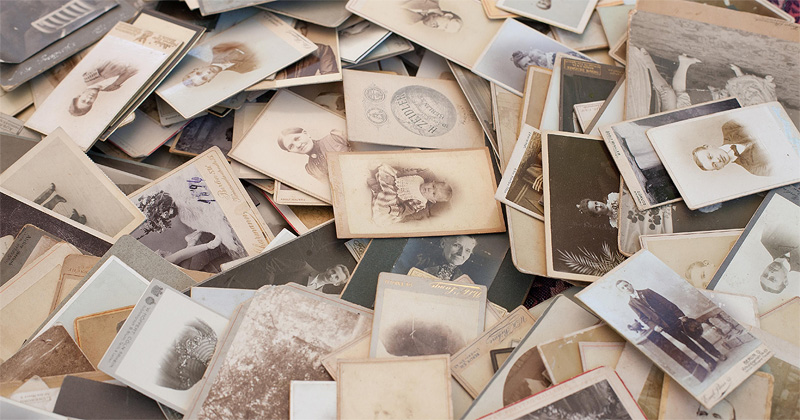
When All of Your Family Heirlooms are Stories
Gina sorell on her grandmother's intangible legacy.
There were six of us cleaning out my grandmother’s apartment after she died—all women, all related, and each with a different relationship to her. We sat on the floor of her cramped one-bedroom apartment, light streaming through the windows and illuminating the dust that scattered from the covers of the books I had stacked to give away.
My grandmother hadn’t really left a will, just her wishes that her things be divided up fairly—a difficult metric to go by, as her idea of fair was always subjective, aligned with whomever was in her favor at the time. My own relationship with her was a complicated one, hindered, as I got older, by the knowledge of her shortcomings as a parent to my beloved mother. I sat among clothes bought on sale, sometimes in duplicates, the tags not yet removed, pieces of fine furniture that had travelled across continents, art books that had been read hundreds of times, and a large tin of jewelry containing the few items that she had not sold. I reached in and pulled out a hand-painted, green wooden box and a pair of silver and freshwater pearl earrings, my heartbeat accelerating at my discovery.
“Oh, I loved those,” said my cousin, “Gran used to wear them all the time. Can I have them?” She reached over to admire them, holding them up to her face to see how they looked.
“They look great on you,” my aunt said.
“You should keep them,” my other cousin suggested.
“No,” I said, surprising everyone. “Please. I gave them to her. I want them.”
It was the only thing that I had asked for all day, my voice lost to the grief of having so many questions that I would never be able to ask her.
“Of course,” my cousin answered, gently passing them back to me. “I didn’t know.”
I was surprised and moved to see that my grandmother had taken such good care of the gift I’d purchased in Florence on a school trip ten years earlier. She had loved that city, and my experience of it was colored by her stories of the beauty of the land and its people. I had found the earrings and little box at a flea market and carefully transported them back in my purse. Green is a color I never wear, and yet, the two things that I hold dear from my grandmother—the jewelry box and the last card she gave me—are both this color. The color of the trees that flanked our weekly walks, the color of the money that drove so many of her motives, and the color of envy—a vice of which I was often guilty, jealous of my younger cousin’s seemingly carefree relationship with her.
Some families have many heirlooms, things that are passed down from generation to generation, but not mine. We have stories. Stories that my grandmother would share with me on our weekly Thursday visits together. It was the one day of the week that I would have her all to myself, giving me a glimpse into her strange and wonderful adult world, a world that she did nothing to alter to meet the needs of a child.
We would meet at her apartment full of books stacked thigh high along the walls, their pages marked with old envelopes recycled into bookmarks, lines of text underlined in pencil, notes often at the margins, and set out on our adventure. Taking the pathway at the back of her building that cut through a leafy green ravine and over a wooden bridge in the middle of the city, we’d walk until we found ourselves at her favorite neighborhood café on the other side. There she would greet her friends, all regulars, eager to talk about what she had just finished reading. She’d introduce me briefly and tell me to order whatever I wanted from the menu while she sipped a cup of her diuretic tea. With no children’s menu offering grilled cheese or chicken fingers, I’d order an egg sandwich and listen in on conversations about philosophy, religion, and spirituality, my grandmother an expert in each, as I ate.
Afterward, when her friends had left, she’d tell me their stories. The lady whose husband abandoned her with two children and no financial support, the beautiful young man whom everyone believed had the makings of a real spiritual leader, the colleague who’d made themselves sick from worry and jealousy. She’d hook her arm through mine and whisper their secrets, stopping in at her favorite bookstore to pick up her latest order before leading me to the pastry shop to buy us each a decadent sweet—what she’d really skipped her lunch for. As we’d make our way back home, the conversation would switch to art and reincarnation, and always, the importance of love above all else.
Looking back, I think of how many of our conversations were not really appropriate for a child, but having never had the opportunity to be a child herself, I’m not sure that my grandmother knew that. And just as she may have had trouble seeing me as a child, I had trouble seeing her as my grandmother. I saw her, as she must have seen herself, as a girl whose broken heart never properly mended, who was damaged and drawn to kindred spirits, who understood what it was like to have loved and lost many times—first her mother, then her brother, and finally her fiancée in the war.
I heard her story the way she chose to tell it, carefully crafted and delivered, the details sometimes changed in the retelling depending on her audience or the point she was trying to make. She taught me early on that sometimes truth can be subjective, memories are ours to shape, and that perspective is everything; lessons as I writer I still carry into my work, striving as she would to empathize rather than judge the characters in my stories.
As we sorted through my grandmother’s belongings, I realized that I wanted something tangible to hold onto as well. When I looked at the earrings, I remembered the stories my grandmother told me, her love of beauty, and the vast, if hidden, impact she had on my life. It seemed to be a symbol of who we once were to one another—sources of pride and inspiration, fellow artists and dreamers, students of life, and lovers of the beauty found in simple things, like the jewelry box I held in my hand.
- Share on Facebook (Opens in new window)
- Click to share on Twitter (Opens in new window)
- Click to share on Google+ (Opens in new window)
- Click to share on LinkedIn (Opens in new window)
- Click to share on Reddit (Opens in new window)
- Click to share on Tumblr (Opens in new window)
- Click to share on Pinterest (Opens in new window)
- Click to share on Pocket (Opens in new window)

Gina Sorell
Previous article, next article, support lit hub..

Join our community of readers.
to the Lithub Daily
Popular posts.

Follow us on Twitter
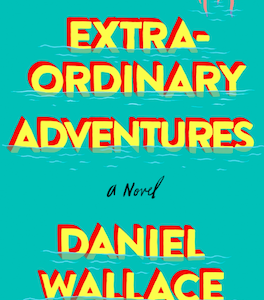
Extraordinary Adventures
- RSS - Posts

Literary Hub
Created by Grove Atlantic and Electric Literature
Sign Up For Our Newsletters
How to Pitch Lit Hub
Advertisers: Contact Us
Privacy Policy
Support Lit Hub - Become A Member
Become a Lit Hub Supporting Member : Because Books Matter
For the past decade, Literary Hub has brought you the best of the book world for free—no paywall. But our future relies on you. In return for a donation, you’ll get an ad-free reading experience , exclusive editors’ picks, book giveaways, and our coveted Joan Didion Lit Hub tote bag . Most importantly, you’ll keep independent book coverage alive and thriving on the internet.

Become a member for as low as $5/month
How to Document the Stories Behind Family Heirlooms

Family heirlooms connect the past to the present in a uniquely personal way. From furniture to jewelry to military memorabilia, these objects embody history and lived experiences. Passing your hands across a worn table or smoothing out the creases in a christening gown sparks the imagination of what those who came before may have felt or done. Caring for and preserving these precious items is a way to honor the past, remember family members, and even pass our heritage down to the next generation.
It is easy to lose the history behind these objects over time, however. Memories fade like old photographs and time ravages even the hardiest of hard woods. In addition to physical preservation of family heirlooms, documenting the stories behind them is an important way to carry forward their history and meaning.
The three key steps to documenting the stories behind your family heirlooms are:
- Identify your family heirlooms
- Find your expert
- Record the story

1. Identify Your Family Heirlooms
The first step is to identify the items you consider heirlooms. These could be photographs, art, figurines, baseball cards, clothing, furniture, jewelry - anything at all. It might be an item in your possession or something that a relative has in their home. It could be worth a lot of money or have deep sentimental value, what matters is that it is important to you or your family.
2. Find Your Expert
Next, figure out who knows the most about each item. Typically your best bet is to start with your oldest living relatives - or whoever passed the item down to you. There may be written accounts or old family photos. You may know enough about an item's origin to start piecing together its story, but collect any and all info you can.
3. Record the Story
How you preserve a family heirloom will vary based on the item itself of course, but at a minimum we recommend taking photos and notes and storing them with other important documents. This might be digitally, in a photo album, or even in a safe - whatever makes sense for you. Try and capture a description of the item, when and where it came from, who owned it, and what it was used for.
If you're lucky enough to have a living relative who knows the story behind an heirloom, record a video of them talking about it. You will not only capture the history of the object but also create a wonderful memento of that family member. You'll get much more nuance and emotion from a video versus a few notes on paper. Here are some questions to help get you started (or use the Remento app which has a pre-created set of prompts to make it even easier):
- What is this object?
- What was it used for?
- Where did it come from?
- Who has used it or owned it over the years?
- Why is it important? What does it mean to you?
- What memories or stories do you have about this object?
- What do you hope happens to it?
- What do you want other people to know about this object?
- Who else in our family might have a story about this?
Next up: 20 Questions to Ask Your Parents or Grandparents
Remento Staff
What’s a Rich Text element?
A rich text element can be used with static or dynamic content. For static content, just drop it into any page and begin editing. For dynamic content, add a rich text field to any collection and then connect a rich text element to that field in the settings panel. Voila!
The rich text element
A rich text element can be used with static or dynamic content.
A rich text element

Static and dynamic content editing
How to customize formatting for each rich text.
Headings, paragraphs, blockquotes, figures, images, and figure captions can all be styled after a class is added to the rich text element using the "When inside of" nested selector system.

The story book that writes itself
Preserve family stories. No writing required.
Related articles

How I Navigate Tough Conversations with Family (By Dayana Preval)

Tips for Great Dinner Conversations

My Experience with Remento (By Bethany Morris)

ADVERTISEMENT
15 Expert Tips for Preserving All Your Family Heirlooms
Sign up for the Family Tree Newsletter Plus, you’ll receive our 10 Essential Genealogy Research Forms PDF as a special thank you!
Get Your Free Genealogy Forms
" * " indicates required fields
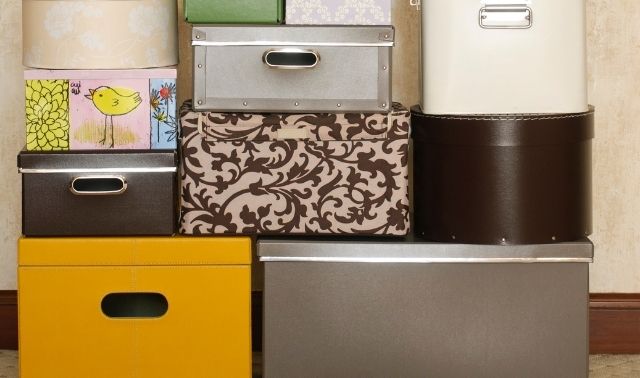
Whether you’ve inherited a shoebox of old snapshots or an entire house filled with a lifetime of memories, becoming your family’s caretaker of the past is a weighty responsibility. It’s also a joy for those who understand the physical connection to your ancestors that old items can provide. We’ve been privileged to stand by you in your role as heirloom guardian. Here, we review some of the best heirloom advice we’ve dispensed in our 15 years, plus a few new tips. Follow these guidelines to care for your collection, and its history will enrich your family for generations to come.
1. Name your collection.
As I’ve grappled with organizing, digitizing, preserving and sharing several generations of keepsakes from both sides of my family tree, I’ve found it remarkably helpful to start with one small thing: Give the collection a name.
The biggest benefit of naming your collection is certainly emotional. Genealogists and nongenealogists understand the power of words. A named collection conveys authority and value. Instantly, it’s no longer someone else’s “stuff.” The box of old photos and letters has become the John and Rebecca Miller Papers or The Stevenson Family Collection, a personal or family archive of value. A personal connection to that box of old papers makes it harder for someone to throw away John and Becky Miller’s old love letters.
2. Copy and isolate newspaper clippings.
I was surprised to learn that many archives, including the New England Genealogical and Historic Society library in Boston, won’t accept newspapers as part of donated collections. The typical high acid content of 20th-century newspapers makes them toxic to any other photos and ephemera they come into contact with.
Instead of keeping the original newspaper with other family memorabilia, photocopy the clipping (or scan and print it) onto acid-free, lignin-free paper. Keep a digital image as a backup and for transcribing and extracting information.
To preserve a newspaper clipping as an artifact, isolate it inside an acid-free, buffered sleeve or envelope and store it in an archival box, where it can’t touch other items. The calcium carbonate used in buffered paper helps prolong the life of acidic paper. You can use large sheets of archival board, available at art supply stores, to separate entire newspapers or enclose collections of smaller clippings and tear sheets.
3. Encapsulate unstable mementos.
When you want to preserve an item that’s unstable from an archival standpoint, such as a newspaper birth announcement or pressed flower, along with an item you want to protect, such as a baby book scrapbook, you can prevent acid migration and further damage by encapsulating the toxic item. This is an especially good technique to use in your scrapbooks, which often include all kinds of potentially damaging materials, such as newspaper clippings (see tip No. 1), receipts and matchbooks.
You can purchase encapsulation supplies from archival suppliers such as Brodart and Hollinger Metal Edge . Or, make your own encapsulation packet using a clear mylar photo sleeve and acid-free double-sided tape: Place the unstable item inside the sleeve and use double-sided tape to seal the sides, leaving the corners unsealed for air circulation. You may need to trim the sleeve or cut it into two sheets so it’s easier to slip the memento between the layers. Static electricity helps hold the item in place without shifting, eliminating the need for glue. The key to encapsulation is its reversibility: You can easily remove the item from the protective sleeve without damaging it, which isn’t possible with lamination.
4. Keep letters and envelopes together in archival folders.
Handwritten letters and stamped envelopes are becoming increasingly collectible as our correspondence moves to email and text messages. You can best preserve your family’s old letters by doing a little prep work before you place them in archival storage.
Wash your hands first to minimize transfer of any oils. It’s fine to wear white cotton gloves, but thinner nitrile rubber gloves are sometimes less awkward. Carefully remove the letter from the envelope and gently unfold the pages. Don’t force the paper flat, which could lead to cracks. If the paper is especially brittle, allow it to rest for a few hours. The relative humidity in your home may help it gently relax.
Remove any foreign objects such as staples, straight pins, paper clips or sewing needles—people would use almost anything to keep pages together. Also remove newspaper clippings and replace them with a photocopies on acid-free paper. Acid migration from newsprint can severely damage old letters (see tip No. 2).
Scan each page and the envelope, front and back. Place all the pages and the envelope together in one archival file folder. Store the folders upright in an archival document case or in a metal filing cabinet. To limit handling of the letters, use your scanned images for transcribing and research.
5. Scan photos and documents only once, at high resolution.
It’s so tempting to quickly scan and email an old photo or document as needed, but each time you handle the item, the oils from your hands and the light exposure of a scanner speed its deterioration (not to mention the potential for accidental tearing or other damage). You can’t eliminate the effects of time, but you can limit how much you touch the materials in your family archive.
Next time you want to post a family photograph on Facebook or email a copy of an heirloom document, take time to scan it, name it according to your file naming scheme, and file the digital image in your family photo library. Set your scanner for loss-less TIFF format (if available) or high-quality, full-color JPG, at 600 dpi (dots per inch) or higher for photos and 300 dpi for documents. For viewing and sharing, make a copy of the master file and use your photo software to convert the copy to a smaller file size (such as a 72 dpi JPG). Now you can put your original in archival storage, to bring out and appreciate on the most special occasions.
6. Dry or freeze wet photos ASAP.
Pipes burst, storms hit, accidental spills happen—sometimes to your family archive. Don’t panic. If your photos become wet, you’ll need to dry them as quickly as possible to minimize the growth of mold or mildew. But wet photos are fragile, so handle them gently. Air-drying is best. Use clothespins to hang your photos by their edges from an indoor clothesline where air can circulate, or place them in a single layer on clean, absorbent paper or cloth. Run a fan (aimed above the photos, not on them) to keep air moving.
It’s best to begin photo rescue operations within the first 48 hours of water damage, before mold can grow. If you can’t work with your photos right away, freeze them until you can. Create packets of 25 pictures, separating them with kitchen wax paper, if available. Place the photo packets inside plastic bags and put in the freezer. When you have time, defrost the packets and air-dry the pictures. Wear nitrile gloves and a face mask to avoid contact with mold spores. (It’s a good idea to collect these supplies in a large tote, to have on hand in case disaster strikes.) Consult a professional photo conservator for advice about restoring heirloom photographs; you’ll find a directory at Conservation-us.org .
7. Remove photos from “magnetic” albums—today.
Practical Archivist blogger Sally Jacobs has great advice for using those “magnetic” photo albums: Don’t! Photos stuck between an adhesive-covered album page and the thin plastic cover sheet will fade and yellow in only a few years. Even worse, your photos can become tightly stuck to the adhesive. If That’s already happened to you, Jacobs suggests removing photos from the sticky pages with the help of a micro spatula, a metal tool that looks like a miniature pancake turner. If possible, insert the thin, flat edge of the micro spatula between the photo and the album page to gently free the photo from the page. Carefully scrape away any sticky residue from the back of the photo before scanning the picture and placing it in an archival sleeve or envelope. Don’t stack the image with other photos; any remaining adhesive could ruin them.
8. Use a tripod and camera to quickly digitize large albums.
Three camera accessories can save you time when you’re digitizing a photo album: a standard tripod, a small flexible tripod and a shutter remote.
Try suspending your camera, lens downward, from the center section of a traditional tripod, so that the camera is directly over the photo. Use the camera’s digital viewer to frame the shot, then snap the picture with a shutter remote to eliminate shutter-shake.
You can use a flexible tripod for your smartphone or digital camera (mine came from Joby.com ) to best position the camera to capture digital images of photo albums and scrapbooks. Use the remote shutter release here, too. A flexible tripod also makes a handy travel companion; wrap it around a chair back or bookshelf to snap a sharp picture.
9. Store antique quilts on an unused bed.
One of the best places to store antique quilts, tablecloths and other large textiles is on an unused bed. Spread out the quilt, cover it with a clean white sheet and keep the cat off the bed, and you can feel good about extending the life of your family treasures.
Don’t have a spare bed? Another option is to loosely roll textiles over polyester batting to minimize folds, then enclose the roll in a clean white cotton sheet. Place folded tablecloths and smaller items inside an acid-free archival box with acid-free tissue to cushion the folds.
Quilts look fabulous displayed on a wooden quilt rack or hung on a wall, but the weight of the materials and the exposure to light, air and dust will fade the fabric and weaken the fibers. If you want to show off your heirloom quilt, keep it in a protected area of your home and limit the time on display. Museums regularly rotate textiles, giving them a few months on display and then moving them back to archival storage.
10. Clean textiles before storing.
Before you pack away the baby’s first hand-knit sweater or your aunt’s needlepoint pillow, take time to carefully wash or dry clean your treasure. Although it may look, feel and even smell clean, anything that’s been worn or handled has gathered skin oils and other contaminants that are attractive to textile pests. Moths, silverfish and carpet beetles love slightly soiled clothing, knits, woolens and cottons. The best defense is to store only clean items and to regularly vacuum and air out your storage area. Check for any sign of infestation and take prompt action to get rid of problems. Note that mothballs are toxic to human health and should be used with care.
11. Vacuum heirlooms with a diffuser.
There’s a right way and a wrong way to vacuum dust from heirloom textiles and artifacts. Your vacuum’s powerful suction can damage or weaken textile fibers and suck up more than just dust from an old photo album.
To help diffuse the suction, fit the brush attachment on your vacuum hose with a protective screen or cover it with an old nylon stocking. Use low suction and hold the nozzle slightly above the surface of the item. Avoid rubbing the surface of the item, which can cause damage from abrasion.
12. Avoid furniture polish.
Don’t use furniture polish and modern cleaners on heirloom wood furniture, case clocks or musical instruments. The ingredients in most of these cleaners don’t help preserve old wood. It’s better to dust the wood with a soft microfiber cloth and if necessary to restore shine, apply furniture paste wax annually.
Place valuable furniture away from high-traffic areas where it’s more likely to get damaged. Also locate it away from heat and sunlight sources, such as radiators, fireplaces and windows, which can dry out the wood and fade the finish. Think twice before undertaking do-it-yourself repairs or modernizing with new hardware, feet or finials. Both could adversely affect the cultural and monetary value of the piece. Instead, consult a professional conservator for assistance.
13. Beware of glass display cases.
I always thought glass-front display cabinets were the perfect way to preserve old treasures—until I saw firsthand the damage they can cause. In museums, display cases are dimly lit and the artifacts they hold are rotated back into storage. But at home, glass cases leave the contents vulnerable to prolonged light exposure.
The cabinet I saw had been untouched for at least three decades in an elderly relative’s home. Porcelain teacups appeared fine and tarnished silver spoons could be polished. But the prized keepsake, a porcelain doll dressed in cotton voile, couldn’t be repaired. Prolonged exposure to sunlight filtering through the room’s windows had turned the white gown brown and brittle. The visible portions of the doll’s porcelain body had yellowed, a marked difference compared to the porcelain protected by fabric.
14. ID removable storage devices.
Have you ever walked away from a library microfilm reader or copier and left your flash drive behind? I have. But thanks to a tip from the Family History Library volunteer who helped me get it back, I now worry less about losing my flash drive.
When I reclaimed my device from the box filled with similar looking memory sticks, my rescuer suggested I create a text file on the drive with my contact information. He helped me use Text Edit on my Mac to create a file with my name, address and cell phone number. We named it –IF LOST PLEASE RETURN TO (the hyphen at the beginning forces the file to sort to the top of an alphabetical file list).
Back at home, I used a label maker to create sticky labels for all my mobile devices—portable scanners, external hard drives and flash drives. I added my identification text file to SD memory cards and wrote my name on their cases with a permanent marker. Don’t add a removable label to any device that’s inserted into your camera or computer, because it can peel away and get jammed in your expensive equipment.
15. Check date and time settings on your digital camera.
Digital files are more useful and easier to find with labels, keywords and other information added to the metadata in your photo organizing software. But the most important piece of metadata is the date and time the digital camera automatically sets. If this information is wrong, your pictures can end up categorized with the wrong year, month or date. Twice a year, when you change your clocks for daylight saving time, make sure your cameras are set to the correct date and time. Confirm that the settings are correct when you import your first new digital images to your computer.
A version of this article appeared in the January/February 2015 issue of Family Tree Magazine .
Denise May Levenick
related articles
Save the stories of your stuff with artifcts, family heirlooms: how to care for the most common types.
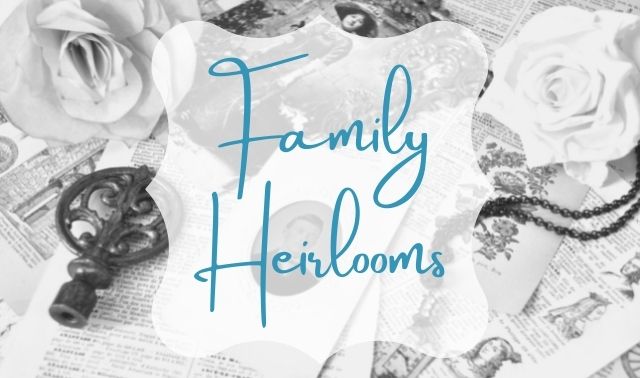
How to Store a Wedding Dress

Tips for Preserving Military Memorabilia: Flags, Medals and Uniforms
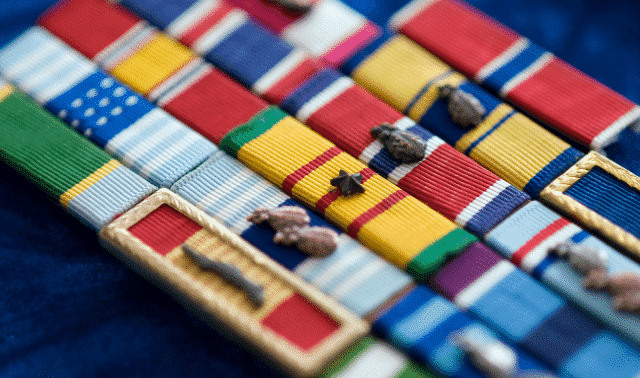
0 ARTICLES LEFT
0 free articles left this month.
Get unlimited access. subscribe
0 free articles left this month
Don't miss the future..
Get unlimited access to premium articles.

- Games & Quizzes
- History & Society
- Science & Tech
- Biographies
- Animals & Nature
- Geography & Travel
- Arts & Culture
- On This Day
- One Good Fact
- New Articles
- Lifestyles & Social Issues
- Philosophy & Religion
- Politics, Law & Government
- World History
- Health & Medicine
- Browse Biographies
- Birds, Reptiles & Other Vertebrates
- Bugs, Mollusks & Other Invertebrates
- Environment
- Fossils & Geologic Time
- Entertainment & Pop Culture
- Sports & Recreation
- Visual Arts
- Demystified
- Image Galleries
- Infographics
- Top Questions
- Britannica Kids
- Saving Earth
- Space Next 50
- Student Center

Elektrostal
Our editors will review what you’ve submitted and determine whether to revise the article.

Elektrostal , city, Moscow oblast (province), western Russia . It lies 36 miles (58 km) east of Moscow city. The name, meaning “electric steel,” derives from the high-quality-steel industry established there soon after the October Revolution in 1917. During World War II , parts of the heavy-machine-building industry were relocated there from Ukraine, and Elektrostal is now a centre for the production of metallurgical equipment. Pop. (2006 est.) 146,189.
Advertisement
Supported by
Times insider
With Empathy, Bearing Witness to One Family’s Plight
For months, two journalists documented a Venezuelan family’s journey to the United States, and the struggles they faced after they crossed the border.
- Share full article

By Luis Ferré-Sadurní
Times Insider explains who we are and what we do and delivers behind-the-scenes insights into how our journalism comes together.
For most of their monthslong trek from Colombia to the U.S.-Mexico border, the Venezuelan family of five had encountered numerous challenges, all exacerbated by a shortage of cash.
Still, they had avoided selling one of their last family heirlooms: a white gold ring. But on the eve of their border crossing late last year, they again ran out of money. And the children were hungry.
I watched quietly, notebook in hand, as the family — two parents, three children ages 6 to 11 and one dog, a Labrador mix — scoured the streets of Ciudad Juárez in Mexico searching for a pawnshop.
As the parents anguished over the decision to pawn the ring, a part of me wished to help. But as a reporter, all I could do was observe and take notes, letting the scene unfold as if I weren’t there. I knew that the poignant moment would be a salient element of the article I was working on for The New York Times.
It was the first of many moments during the nine months I spent following the Aguilar Ortega family’s journey to a new life in the United States where I had to confront the challenges of reporting on their ups and downs without influencing the outcome of their story.
We are having trouble retrieving the article content.
Please enable JavaScript in your browser settings.
Thank you for your patience while we verify access. If you are in Reader mode please exit and log into your Times account, or subscribe for all of The Times.
Thank you for your patience while we verify access.
Already a subscriber? Log in .
Want all of The Times? Subscribe .

IMAGES
VIDEO
COMMENTS
Keeping the Stories of Family Heirlooms Alive. By FamilySearch. July 3, 2017. "Every family has keepsakes," said Elder Dennis B. Neuenschwander in an April 1999 general conference address. "Families collect furniture, books, porcelain, and other valuable things, then pass them on to their posterity. Such beautiful keepsakes remind us of ...
One of the most valuable things about family heirlooms is the way they preserve our memories of our ancestors. These items can be physical reminders of important events and people in our family's history. And this helps us to connect with our past in a tangible way. For example, my grandmother's wedding set has been passed down through the ...
In June, The Times published " Heirlooms, Redefined ," a look at treasured family heirlooms from Black families. Tiya Miles and Michelle May-Curry write: Families cohere by keeping histories ...
Essay: How Revisiting Family Heirlooms Brings About New Meaning. One writer is on a mission to put her grandmother's favorite saucepan to use. ... When we think of heirlooms, we tend to think of things with monetary value — jewelry, china, silver, maybe art or furniture. But when we think of inexpensive, decades-old household items, we tend ...
Step 1: Make an inventory. The first step is to inventory your family heirlooms. If you don't have many, start with those that come to mind first; they're probably the most precious to you. List each item on the Treasure Inventory you can download above.
The Bracelet: A Family Heirloom. Older than anyone I know and made of a somewhat soft, orange gold. That's the first thing that comes to mind when I think about my little bracelet. It's delicate but awkwardly large, with an unnatural predetermined shape to it. It's an important thing not only because it's old and a family heirloom, but ...
For Juneteenth, a holiday about celebration and remembrance, 10 photographers documented treasured family heirlooms, exploring how they gain meaning and strengthen family bonds. Photographs for ...
Thrifted Purple Heart. A Purple Heart medal found at a thrift store in Arizona was reunited with its World War 2 veteran's family. No matter what family heirlooms you have, each one tells a unique story—of the person or place of its origin. These heirlooms, even after centuries, still bring families together as they tell of the past.
Filtered air, a temperature of 72° F or below, and humidity between 45 and 55 percent are ideal goals. If you feel that you must display fragile items, then try to avoid dampness, too much heat, and dramatic changes in temperature and humidity. If you feel comfortable, your treasures probably will too. Display and store your family heirlooms ...
death family legacies Gina Sorell grandmothers heirlooms partners Prospect Park Books. Gina Sorell is an author living in Toronto. Her debut novel Mothers and Other Strangers was published by Prospect Park Books in May 2017. Learn more at www.ginasorell.com.
Family heirlooms connect the past to the present in a uniquely personal way. From furniture to jewelry to military memorabilia, these objects embody history and lived experiences. Passing your hands across a worn table or smoothing out the creases in a christening gown sparks the imagination of what those who came before may have felt or done ...
A Sword from the War. Steven Albert's dad, Jack, center, in Bremen, Germany, with Army buddies in September 1945. The sword sits at the bottom of a trunk in Steven Albert's home office. Mr ...
The Importance Of Family Heirlooms. Family Heirlooms have a tradition that families practice when a new generation comes along. For many young men and women who have finally entered the stage of maturity, their parents present them with a small gift to signify the transition into their next stage of life. The stages of life can be an event such ...
The best defense is to store only clean items and to regularly vacuum and air out your storage area. Check for any sign of infestation and take prompt action to get rid of problems. Note that mothballs are toxic to human health and should be used with care. 11. Vacuum heirlooms with a diffuser.
9. Collections. If a loved one collected coins, stamps, figurines, baseball cards, or anything else, the collection is likely to be passed down to the next generation. Many collections increase in ...
Julia Oubre September 8, 2017 6 th hour Family Heirloom Essay My family heirloom is a small silver box, the size of a palm. This box, although small and thin looking, is heavier than it should be. On the outside of the box is very exquisite designs that have a hint of the shade of blue. There is also a mini 3-D sculpture on the center of the box lid that looks like a woman.
Family Heirlooms. Family Heirlooms Alice Walker's short story "Everyday Use" stresses the importance of family heirlooms and the tradition of passing down artifacts from generation to generation. One of the main characters is the narrator Mrs. Johnson or "Mama.". She is the mother of two very different girls named Maggie and Dee.
5. Families convey meaning through stories, traditions — and the conveying of heirlooms. For Juneteenth, a holiday about both remembrance and celebration, 10 photographers documented a treasured ...
Fabrika Obedov, Elektrostal: See 33 unbiased reviews of Fabrika Obedov, rated 4.0 of 5 on Tripadvisor and ranked #9 of 30 restaurants in Elektrostal.
In 1938, it was granted town status. [citation needed]Administrative and municipal status. Within the framework of administrative divisions, it is incorporated as Elektrostal City Under Oblast Jurisdiction—an administrative unit with the status equal to that of the districts. As a municipal division, Elektrostal City Under Oblast Jurisdiction is incorporated as Elektrostal Urban Okrug.
Though we hadn't quite been inside her head, the project, a photo essay titled "Heirlooms, Redefined," published on Friday, was indeed influenced by the zeitgeist of Black creativity around ...
Family. Languages Spoken. English, Russian. Location. Raskovoi st., 6, Elektrostal 144000 Russia. Name/address in local language. Elektrostal Hotel. 25 reviews. Getting there. Car recommended. Places to stay are graded on a 0-100 scale. The higher the grade, the easier it is for travelers to find restaurants and things to do within walking ...
Elektrostal, city, Moscow oblast (province), western Russia.It lies 36 miles (58 km) east of Moscow city. The name, meaning "electric steel," derives from the high-quality-steel industry established there soon after the October Revolution in 1917. During World War II, parts of the heavy-machine-building industry were relocated there from Ukraine, and Elektrostal is now a centre for the ...
Still, they had avoided selling one of their last family heirlooms: a white gold ring. But on the eve of their border crossing late last year, they again ran out of money. And the children were ...